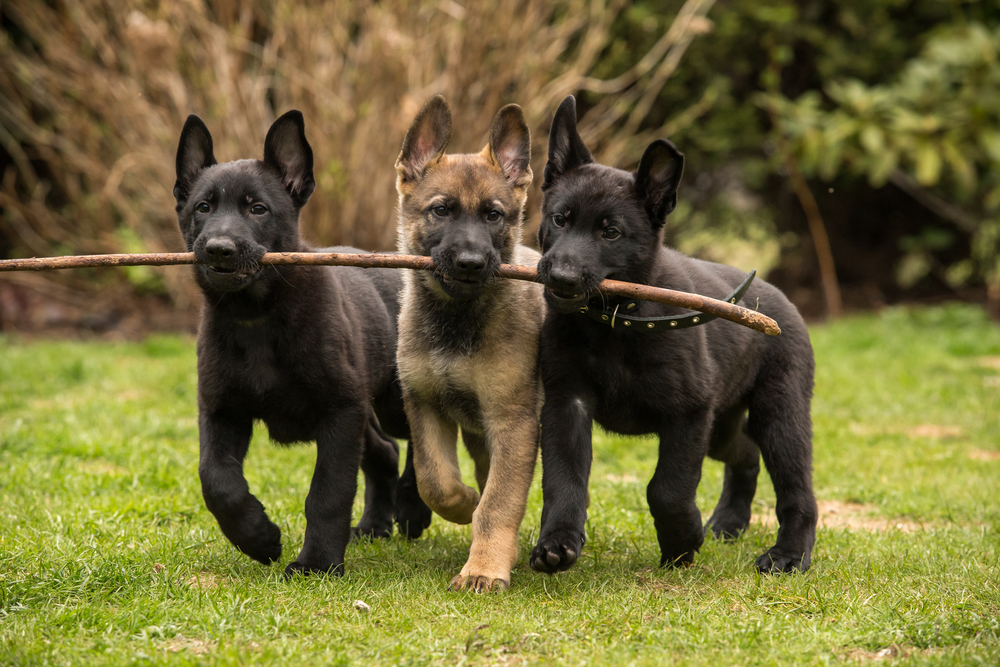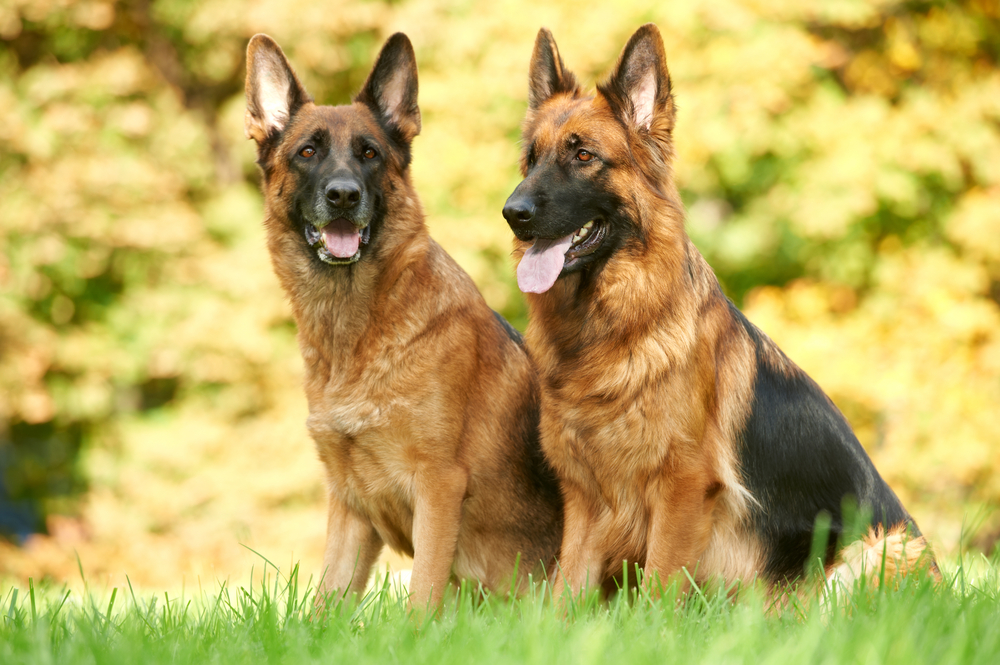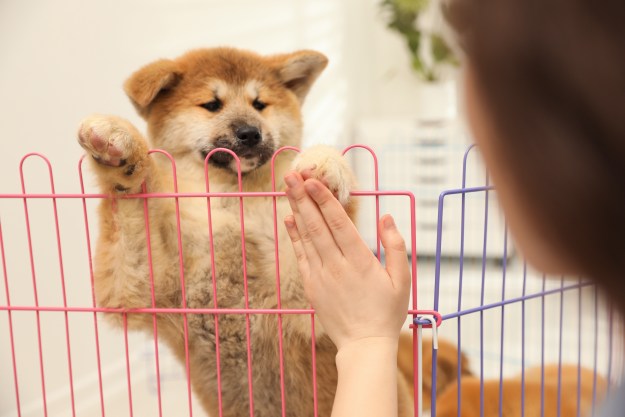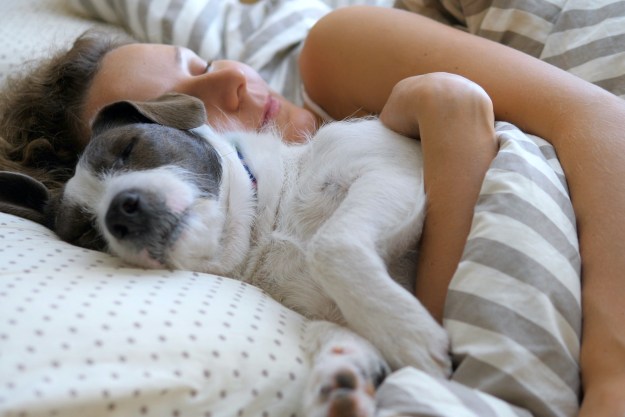Whether you’ve adopted a German Shepherd Dog (GSD) into your family as a show dog, a watchdog, or simply as a loyal companion, it may surprise you to learn that there are seven lines of GSDs, each with its own features and characteristics. These intelligent, loyal, and hardworking dogs, maybe best known as military and police dogs, grow quickly and need a crate that’s roomy and comfortable. Here’s a quick guide for choosing the right crate for your pet.
What size crate does my German Shepherd need?
Dog crates come in a variety of sizes and, as the owner of a German Shepherd, you’re going to need one that’s at least 42 inches long. Your dog, when fully grown, needs to be able to turn around completely, sit up comfortably, and lie on his side with his paws outstretched when he’s in his crate. The goal is to buy a crate that is large enough but not so large that he can use one end to relieve himself. Although dogs don’t like to potty where they sleep, they will if they have a big enough crate.

Which crates are best for German Shepherds?
For German Shepherds, like other big dogs, you have a variety of crate styles to choose from.
- Wire metal folding crate. Crates in this common style can be assembled quickly and folded for easy travel. They are also easy to clean and fairly indestructible, which is key for active breeds such as GSDs.
- Folding soft crates. Most of these crates are made with nylon or canvas and are not suitable for dogs that like to chew or dig. Additionally, some may not be available in a size large enough to accommodate your big dog. If you’re considering a soft-sided crate, read the manufacturer’s descriptions carefully to make sure the crate is large enough and durable enough for your pup.
- Furniture crates. These are decorative additions to your home, and some can even double as end tables or credenzas. Most of these are constructed of wood or a composite material. Because they are primarily decorative, make sure the construction is durable enough to stand up to your strong and active GSD.
Before you purchase a crate for your GSD, decide how you’re going to use it. Looking for a sturdy crate you can set up permanently at home? Give some thought to where you’re going to put it. If you’re looking for a travel crate or something you’ll be setting up on occasion, you might want something more lightweight.
Most importantly, consider your dog’s unique personality. GSDs are highly intelligent dogs who need a lot of mental and physical exercise. If your dog is highly active, choose a crate built strong enough to withstand any potential destructive behavior.
If you’ve adopted a German Shepherd puppy, opt for a crate with a divider. Dividers are typically made of metal or plastic and let you partition the crate into separate sections. This way, you can gradually enlarge the crate’s living space as your puppy grows, saving you time and money. And remember: You shouldn’t leave a puppy in a crate any longer than four hours, eight hours for an adult dog.

Are all German Shepherds the same?
Generally, there are two types of GSD — show dogs and working dogs — with seven distinct lines overall. Although each line was bred to exhibit a different body type, color, personality, and vigor, on average, you can expect your GSD to stand 22 to 26 inches tall and weigh anywhere between 45 and 88 pounds.
- American and Canadian show lines have German heritage; however, they have been bred with American dogs to maintain a consistent body style and color pattern in line with AKC and CKC standards.
- American-bred pet lines have the same body type and personality as show dogs but were bred primarily for companionship from registered purebreds.
- West German show lines are typically red with a black saddle. In addition to having a specific appearance and gait, they are expected to exhibit agility and obedience skills.
- West German working lines are direct descendants of the Max von Stephanitz GSDs, who were bred primarily for temperament and personality.
- East German working lines were bred for workability and are usually darkly colored with features more resembling wolves’.
- Czech working lines were bred specifically to patrol the Czech border and have larger heads and thicker paws. These extremely agile and protective dogs are mostly black with some shades of red and tan.
How quickly do German Shepherds grow?
Your German Shepherd puppy will reach full size within 18 to 24 months. Some GSD lines in Eastern Europe take longer, even as long as 36 months.
Regardless, time passes quickly. The puppy you bring home today will be an adult dog before you know it. And the adult dog you adopt into your family will need lots of activity and exercise to suit his innate characteristics. Above all, know that your GSD is an intelligent, confident dog with a loving temperament and will bond with your family to become an excellent watchdog and loving companion.
Editors' Recommendations
- 5 surefire ways to keep your dog off your bed and get a good night’s sleep
- Taking your dog’s collar off at night: Safe move or safety risk?
- Why do dogs sleep under the covers? It all comes down to nature
- Dog playpens are a great idea for puppies and older pets alike – here are the ones we recommend
- These are the dog crate training pros and cons you need to know: Size, process, and more



